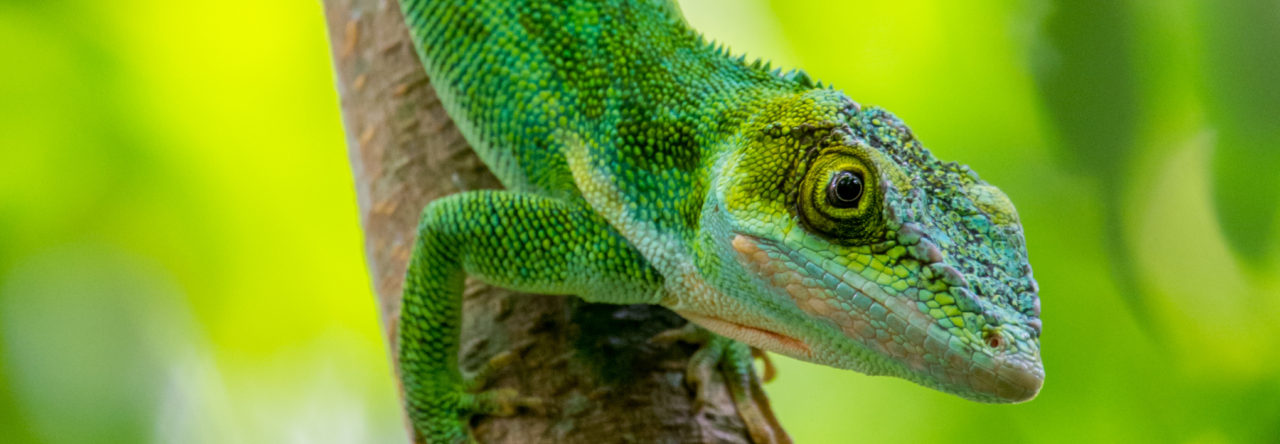
SDMs for (A) A. cooki, (B) A. cristatellus, (C) A. evermanni, and (D) A. gundlachi. Left images are current suitable habitat. Right images are predicted suitable habitat in 2070 under HadGEM2-AO RCP8.5. The warmer the color (the redder it is), the more suitable the habitat.
Species Distribution Models (SDMs), although relatively new compared to other ecological methods, have been built for a wide range of taxa over a variety of habitat types and regions of the world. Given their widespread use, it was surprising to Brad Lister and me that there were very few SDMs for anoles, and in particular, none for Puerto Rican anoles. Brad and I decided to model the potential suitable habitat for all ten Puerto Rican Anolis species under various climatic scenarios for the years 2050 and 2070. The results of our study showed declines in suitable habitat for nearly all ten mainland Puerto Rican anoles with the exception of Anolis cooki. Declines in suitable habitat have the potential to substantially increase extinction risks for anoles. Although this study focused on Puerto Rican anoles, it is plausible that similar climate change impacts could be seen throughout the West Indies.
Species Distribution Modeling is a rapidly developing subfield of ecology, but we found a paucity of useful information that linked all the steps together. I am now working on a step-by-step tutorial that will fill in a lot of missing information on the steps that many tutorials breeze past. For me, an important component of creating SDMs was using software with the greatest potential for widespread use and method replication. For instance, ArcGIS is exceptionally powerful, but comes with steep licensing fees. For that reason, we opted to use comparable, open-source packages QGIS and DIVA-GIS. With respect to the actual modeling software, MaxEnt is a great option with no associated cost. Additionally, although we did not use it for this paper, Wallace is a very useful platform that incorporates different algorithms (including MaxEnt) for creating SDMs in a user-friendly series of guided steps.



As a part of my doctoral research in the Akcakaya Lab at Stony Brook University, I intend to build more accurate SDMs for Puerto Rican anoles by incorporating biotic interactions and more relevant predictor variables. I am also interested in working on SDMs that output multi-species range shifts given forecasts of future climate change. With these initiatives in mind, I anticipate reporting on new developments in Anolis SDMs in the near future. In general, the study of Anolis SDMs is just beginning and many important research directions remain to be explored. As we expand the use of SDMs I think it’s useful to keep George Box’s quote in mind: “All models are wrong, but some are useful.” It’s an informative mindset to have when building and interpreting any SDM. Although they can be helpful in conservation decision making, their results are just predictions based on more predictions and we need to keep asking ourselves how those predictions can be improved.
- Sorry About Those Odd Posts — We’re on It! - April 2, 2025
- Anoles at SICB 2025! - December 22, 2024
- Hurricanes Shape Puerto Rican Anole Distributions - March 26, 2024


Leave a Reply